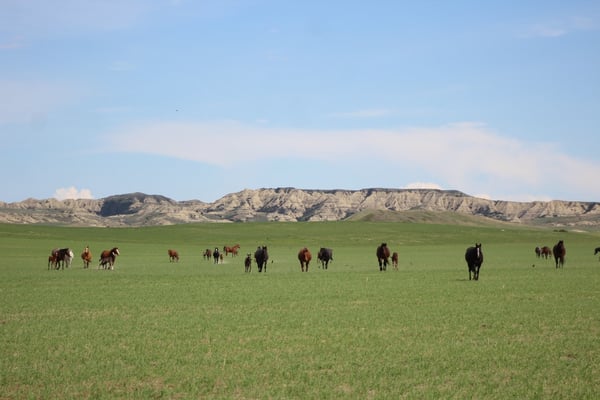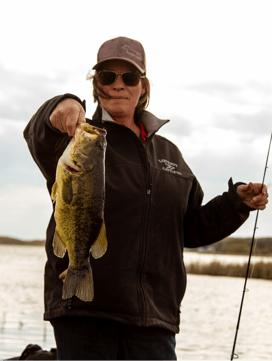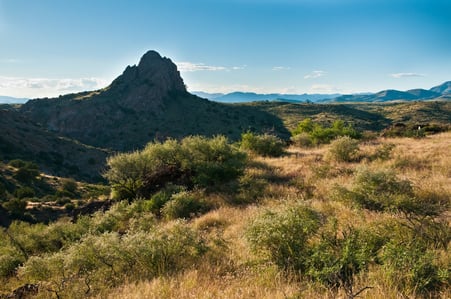Diversity in your Land Business – Have you planned for it?
 About the author: John Hansen is a Nebraska Landowner bringing his ideas and perspective to the forefront of our mission; to partner with landowners who value adaptive management and are seeking alternative sources of revenue. With an education in Animal and Range Sciences from Montana State University, several years managing small to medium sized ranches, and 26 years with Ted Turner managing some of the largest land holdings in the U.S., John brings a depth of knowledge and experience to LandTrust and its landowner partners. His strong background in agriculture and natural resource management provides a unique opportunity to share what he has learned through this extensive experience base with landowners to help them achieve a more profitable Land Business.
About the author: John Hansen is a Nebraska Landowner bringing his ideas and perspective to the forefront of our mission; to partner with landowners who value adaptive management and are seeking alternative sources of revenue. With an education in Animal and Range Sciences from Montana State University, several years managing small to medium sized ranches, and 26 years with Ted Turner managing some of the largest land holdings in the U.S., John brings a depth of knowledge and experience to LandTrust and its landowner partners. His strong background in agriculture and natural resource management provides a unique opportunity to share what he has learned through this extensive experience base with landowners to help them achieve a more profitable Land Business.
In previous blogs, we have addressed viewing your Land Ownership as a Land Business and have identified some potential un-realized revenue streams as well as the importance of a diversity of revenue streams. We have also looked at how the market for some of those potential revenue streams has changed and is continuing to evolve.
 Diversity of enterprises, with its attendant diversity of revenue, is very important to landowners. It can help insulate you from fluctuating markets, weather extremes, and other conditions that you have little or no control over. I think we can agree that diversity is a good thing in business, ecology, agricultural production, and life in general. However, just adding another enterprise may not generate the response in your land business you want or expected. This is why planning is so important and critical to ensuring a successful diversification of your land business.
Diversity of enterprises, with its attendant diversity of revenue, is very important to landowners. It can help insulate you from fluctuating markets, weather extremes, and other conditions that you have little or no control over. I think we can agree that diversity is a good thing in business, ecology, agricultural production, and life in general. However, just adding another enterprise may not generate the response in your land business you want or expected. This is why planning is so important and critical to ensuring a successful diversification of your land business.
Nebraska Landowner, Paul Ehernberger, (featured left) hosts various experiences at Maple Creek Canyon, such as private tours, hiking, photographers, birding groups, fire pit rentals, and retreats.
I have been fortunate to have had training in planning methodologies during my career from both the Center for Holistic Resource Management and Ranch Management Consultant’s Ranching for Profit School (I highly recommend that land managers attend one of these schools or from an accredited instructor). Additionally, I have had the opportunity to apply the planning principles across many agricultural operations throughout the western United States. These are very effective methods and will help you bring clarity to the direction and action steps needed to assist your land business development. It is also important to not work through this planning process by yourself. Your team, often family members (possibly more than one generation), and trusted/critical employees should be part of this process to be truly effective. Honesty and candor are important for an effective planning process to be truly effective. My experience has shown that an outside facilitator can be very helpful during the process, especially in multi-generational family land businesses.
.jpg?width=600&name=MT%20Farm%20Bureau%20Spokesman%20Cover%20-%20Web-12%20(1).jpg) Multi-generation landowners and operators at the Storey Ranch.
Multi-generation landowners and operators at the Storey Ranch.
The first step is to outline your goals. It is important to be very specific and spend as much time as needed to develop sound and achievable goals. This is a three-part set of goals consisting of:
- Landscape goal: For this goal, you will describe how you want your land to look and function. The more specific you outline the goal, the more precise you can plan and develop action steps to achieve that goal. The description generally encompasses (but is not limited to) aesthetic appearance, water cycling, mineral cycling, energy flow, and biological activity and health. Most landowners have a general sense of what they want, but seldom (if ever) actually spell it out. If it is not clearly described, how can you reach that goal?
 A beautiful day on the Mahlstedt Ranch - offering numerous agritourism experiences.
A beautiful day on the Mahlstedt Ranch - offering numerous agritourism experiences. - Production/financial goal: You now formalize what you want/need the land to produce to make the business viable from a monetary (and possibly non-monetary) standpoint– not all production will have a direct monetary component. Required gross revenue and net revenue figures should be calculated to meet the cash flow and profit required to sustain and grow your business. It is important to be aggressive (yet realistic), because if you don’t aim high, at best you will only maintain.
 Quality of Life goal: This may be the most overlooked, yet possibly most important, goal in most land business endeavors. I think most landowners get so focused on the production/financial goal they forget that they are supposed to enjoy the land they live on or own. These goals, though possibly simple, are highly important. Some of the more common goals I have encountered are reasonable work week, family time, vacation time, sense of value to the operation, improved family income, etc. I believe that if you and your team are not enjoying a good quality of life, it is very difficult to have long-lasting success in your land business.
Quality of Life goal: This may be the most overlooked, yet possibly most important, goal in most land business endeavors. I think most landowners get so focused on the production/financial goal they forget that they are supposed to enjoy the land they live on or own. These goals, though possibly simple, are highly important. Some of the more common goals I have encountered are reasonable work week, family time, vacation time, sense of value to the operation, improved family income, etc. I believe that if you and your team are not enjoying a good quality of life, it is very difficult to have long-lasting success in your land business.
Landowner, Jody Dexter (above), enjoying the resources and experiences available on her family's land at the Lovejoy Ranch in Valentine, NE.
With the goals written and generally agreed upon by the Team, it is necessary to record some important information about your land business to assist in the planning process. Just talking about it is not enough – all of the information, thoughts, ideas, etc. should be written and recorded for future reference. Consider outlining:
- Current enterprises along with what portion of the land’s resources, financial resources, and labor/time resources they utilize, along with what they contribute to the revenue side of the equation. This is a good time to record who on the team is the lead/responsible person for that enterprise.
- What are the strengths of our business? You should identify what you see as strong attributes that will help your business be successful and move it into the future as a viable and growing business. This can include such things as excellent location to markets, dedicated workforce, minimal to no debt, long growing season, excellent soils, healthy ecosystem processes, etc. – the list can be long.
- What are the weaknesses/vulnerabilities of your business? You need to record what you see as the factors that could be a threat to your business. This often includes the following: variable weather/rain conditions affecting production, high debt load, dependance on highly variable markets, family/ownership relations, etc. – again, a long list is possible.
.jpg?width=600&name=_T4R6544%20(1).jpg) Landowner, Ches Meyer, discusses diversifying his business with LandTrust at the Meyer Ranch.
Landowner, Ches Meyer, discusses diversifying his business with LandTrust at the Meyer Ranch.
With the above goals and information at hand, you can now start to look at any proposed ideas for additional enterprises and see if they are a “fit” for your business. As you address a new enterprise idea (or modification to an existing enterprise), ask yourself the following:
- Does this fit within, and allow us to achieve, the 3-part goals we have determined are important to us?
- Does this capitalize upon a “strength” we have identified?
- Does this work to minimize a “weakness” we have identified?
- Does this conflict with other existing (or contemplated) enterprises in place?
- Does this have synergy with other existing (or contemplated) enterprises in place?
.jpg?width=600&name=MT%20Farm%20Bureau%20Spokesman%20Cover%20-%20Web-13%20(1).jpg) A beautiful evening overlooking the Storey Ranch.
A beautiful evening overlooking the Storey Ranch.
By working through this planning process, you will be able to rapidly ascertain if a new enterprise is appropriate. I have had this planning process bring forth ideas for new enterprises, or modifications to existing ones, that had not been thought of before. It can, and probably will be, the most profitable exercise you and your team can go through. This has been a very brief overview and explanation of the basic principles of the process. I encourage you to contact one of the following groups to inquire about the classes/seminars to get a full tutorial on this highly important aspect of your land business success.
Crossroads Ranch Consulting, Inc.
Roland Kroos
Training and Consultation
Ranching for Profit School
HMI
Holistic Resource Management
Training
Landowner, Paul Schwennesen, brings diversity to his land via birding opportunities, attracting recreators from all over the world. The Gallery Forest and Blackjack Creek in central Arizona (above).
Trusted services
LandTrust helps make sharing easy, enjoyable, and safe. We verify personal profiles and listings, maintain a smart messaging system so Landowners and Recreators can communicate with certainty, and manage a trusted platform to collect and transfer payments.


